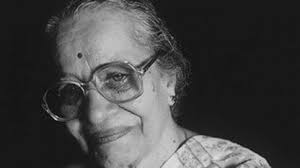Benefits of Yoga & Meditation Yoga – A Spiritual Practice

Yoga is a physical, mental and spiritual practice that originated in India. The word “yoga” comes from the Sanskrit word Yuj, which means to join or union. The practise of yoga is meant to help you connect mind and body. Yoga has been around for thousands of years and has been practised by people all over the world.
Yoga can be done alone or with others in either a studio setting or at home on your own time. You do not need special machines for yoga; it can be done anywhere even when travelling or commuting on public transportation!
There are many different types of yoga: Ashtanga Vinyasa Flow (Power), Hatha Vinyasa Flow (Flow), Kundalini Meditation(Meditation), Power Flow Fusion(Fusion), Restorative Yin Yoga(Restorative).
Each type has its own benefits depending on what parts of yourself that you want to strengthen or heal such as mind body spirit connection; flexibility (stretching); strength building exercises like push-ups & pull-ups; cardio vascular endurance exercises such as high knees running jogs jumping rope so that you can burn off calories faster than going into an aerobics class would allow without risking any injuries during pregnancy due to increased pressure on joints during pregnancy/postpartum stage in life cycle stages.”
Yoga – Orthodox Schools of Hindu Philosophical Traditions.
Yoga is one of the six orthodox schools of Hindu philosophical traditions. It focuses on meditation, and on the cultivation of awareness (samādhi) through yoga practice. Yoga has been central to Indian religions since ancient times and has gradually been adopted by many non-Indian faiths including Buddhism, which made it known worldwide in the modern era.
The earliest references to yogis can be found in texts that date back to around 5000 years ago. These names include Matsyendranath (also known as Matsyendra), Gorakshanatha and Rishi Agastya who all lived during this period. There are also accounts from other cultures such as China (4000 BC), Mesopotamia (3000 BC) and Greece (1600 BC).
The origins of Yoga
Yoga is a practice that has been around for thousands of years. We don’t know exactly how long, but we do know that the origins of yoga were thought to have started in ancient India where it was first mentioned in the Rigveda.
The earliest written reference to yoga is in this ancient text, which means it must have been developed sometime between 1500 BCE and 1200 BCE. However, there are many different versions of Yoga that developed over time and still exist today such as Hatha Yoga or Bhakti Yoga (the path of devotion).
These new styles often incorporated different elements from other Eastern religions like Buddhism and Jainism into their practices which led them down different paths than their original counterparts did during their time period. These styles are taught by various registered yoga schools across the globe.
Introduction to the West
In the early 20th century, yoga gurus from India introduced yoga to the West, following the success of Swami Vivekananda in the late 19th and early 20th centuries. He was a yogi who preached peace and harmony between people of all religions. This led to growing popularity for yoga as it spread across Europe during this period.
Yoga is now practised by millions across Europe and North America as a physical, mental and spiritual practice. It is one of six orthodox schools of Hindu philosophical traditions that originated in India around 1500 BCE (before the common era) but did not reach any western countries until after World War II ended in 1945.
Popularity Across the Western World
In the 1980s, yoga became popular as a system of physical exercise across the Western world. Yoga is now one of the most widely practised methods of physical exercise in the United States and Canada. According to market research firm IBISWorld, yoga studios generated nearly $10 billion in revenue in 2016 alone.
Yoga is a physical, mental and spiritual practice that originated in India over 5,000 years ago. It is one of six orthodox schools (or darsanas) of Hindu philosophical traditions.
The term “yoga” translates as “union” or “yoking”; hence it refers to coming into harmony with oneself by using meditative techniques such as concentration (Dharana), meditation (dhyana) and self-discipline. The ultimate goal is moksha (liberation from samsara or suffering).
Benefits of Yoga
Physical therapy can be beneficial for people with health issues such as joint pain due to injury or arthritis. Physical therapists are medical professionals who help patients recover from injuries, surgeries, and other physical ailments by using exercise and other techniques.
These techniques may include heat or ice packs, ultrasound treatments (which use sound waves), massage therapy, electrical stimulation (TSE) machines that send a low-level current through the skin of the injured area to stimulate nerves and muscles in the region, massage balls that improve blood flow to damaged tissues and reduce swelling, stretching exercises designed specifically for your condition (such as knee exercises if you’ve torn your ACL), resistance bands that provide resistance when performing certain movements (like walking), balancing boards with adjustable weight loads on them so you can increase strength in one leg at a time during specific activities like running
Yoga Became Popular Among All Age Groups.
Yoga and meditation have become popular around the globe among all age groups. The benefits of yoga and meditation are innumerable. These include enhanced stress relief, increased flexibility and strength, better breathing control, and reduction in high blood pressure and diabetes.
These practices also help you lose weight by burning calories or fat mass through vigorous exercise routines designed for each individual’s ability level. Yoga helps in reducing stress as it involves physical activity that is rhythmic as well as focused on breathing techniques to relax body muscles while improving concentration skills at the same time.
It can also help improve metabolism results by regulating adrenal functions that promote a healthy digestion system helping maintain a good body weight even after losing some pounds during your dieting period
Yoga for Recovery Process.
As we mentioned earlier, yoga is a great way to stay fit. It is also useful in helping people recover from certain ailments. If you are suffering from back pain or joint pain, yoga can be very helpful for your recovery process. Yoga helps people with depression, anxiety and stress too. If you have hypertension or diabetes, practising yoga will help reduce your blood pressure levels and keep your sugar levels under control
Helps in Dealing with Mental & Physical Issues
Yoga and meditation help in dealing with hypertension and diabetes by lowering blood sugar levels and blood pressure through stress reduction and relaxation. Yoga helps in losing weight by burning calories, reducing stress, regulating adrenal functions, improving metabolism and building muscle strength.
Helps With Weight Loss
Yoga and meditation are wonderful for losing weight because they improve your metabolism, which helps you burn calories faster.
Yoga also helps reduce stress and boost your immune system, which can make it easier to lose weight by helping you feel less hungry when you’re under stress or fighting off illness.
It’s true that yoga doesn’t target any one area of your body specifically, but that also means there are no negative side effects—you don’t have to worry about developing an unattractive “belly bulge” from doing too many sit-ups! A regular routine of yoga poses will build up muscles everywhere in the body (not just those targeted areas), helping to promote weight loss in general. And who doesn’t want more muscle?
Yoga can reduce joint pain.
Yoga is a physical, mental and spiritual practice. It involves the disciplined use of stretching, breathing and meditation techniques designed to improve health and well-being. Yoga can help you lose weight, reduce joint pain and improve your mood.
The physical benefits of yoga include:
- Increased flexibility (the ability to move freely) in the spine, hips, knees and ankles.
- Improved cardiovascular fitness (the ability to exercise for a long time without becoming tired).
- Toning muscles throughout your body—not just those that are obvious when you’re doing particular poses
- like “downward dog” or “warrior III
visit for more articles :https://forstory.org/




